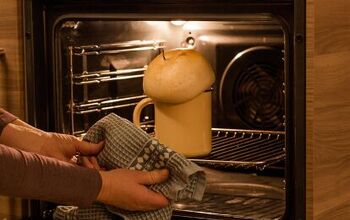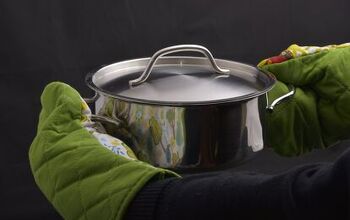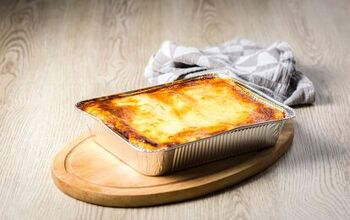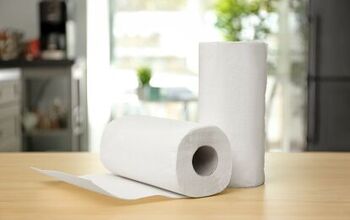Can You Put A Cooling Rack In The Oven? (Find Out Now!)

Most bakers use them regularly. Cooling racks are great tools in the kitchen when you need to evenly cool baked goods on all sides. Most bakers routinely move their baked goods from the pan to the cooling rack. However, some ask if it is possible to put a cooling rack in the oven for backing?
It depends on the type of material used to make your cooling rack. Stainless steel cooling racks are usually oven-safe at normal backing temperatures. Non-stick cooling racks may not fare well in a hot oven. The most common non-stick materials will peel and warp at backing temperatures. Always check the manufacturer’s recommendations before using a cooling rack in the oven.
Making more efficient use of your baking and cooking tools is always a great way to enhance your enjoyment. Using your cooling rack in the oven can be more efficient. There are many more ways to use your cooling rack in your kitchen. Let’s take a look at some of these innovative uses of a regular cooling rack.
Cooling Rack Design
When choosing a cooling rack, there are certain design elements that you should consider if you want to make more use of the rack. You should consider some of these options for your next upgraded cooling rack.
What Material Should I Choose?
Cooling racks come in a wide variety of materials. Some of the most popular materials used to manufacture cooling racks include:
- Stainless steel – Stainless steel is probably the most popular material for cooling racks used in home kitchens. Stainless steel’s resistance to rust is notable. No one wants to end up with a rusty cooling rack.
- Chrome steel – Chrome steel is also highly rust-resistant but not as much as stainless. Most chrome cooling racks have a thin chrome plating over a regular steel core. If the chrome plating gets scratched or damaged, the mild steel core will soon rust.
- Aluminum – The heat transfer and conducting characteristics of aluminum makes it a great material for cooling racks. However, many people avoid aluminum because they fear putting too much aluminum into their food and suffering long-term effects.
- Iron – Iron is another good conductor of heat. However, iron rusts readily, and unless great care is taken with the cleaning, maintenance, and storage of iron cookware, they can rust beyond use.
- Wood – Wood cooling racks have long been the choice in commercial bakeries. However, if you want to use your cooling rack for other purposes in your oven, wood is not the choice for you.
Our recommendation is to choose stainless steel or chrome-clad steel as the preferred material for your cooling rack. These materials promise long life, heat resistance, and great heat conduction for cooling.
Is Non-stick Coating a Good Idea?
In general, if you want to use your cooling rack in your oven or for other purposes, we advise against any sort of non-stick coating. Each type of non-stick coating has its limitations that make them unsuitable for other uses. The most common non-stick coatings include:
- PTFE, also known as Teflon – PTFE is probably the most common and widely known non-stick surface used on cookware. This material has been in use for many years and has a reputation for durability and non-stick properties. However, some people have concerns that high heat in an oven will release chemicals in the PTFE into their food. For this reason, we don’t recommend cooling racks with a PTFE coating for use in ovens with high heat.
- Ceramic coatings – The use of ceramic materials as a non-stick coating has become popular in the last few years. Ceramic coatings provide good non-stick characteristics at normal cooking temperatures and are durable if used and maintained properly. At high heat in an oven, some ceramic coatings may release from their underlying metal and flake.
- Silicon coatings – Silicon has become popular in kitchens for several reasons. Silicon provides a non-stick surface when applied to cookware. When used as utensils, the silicon will not damage the surface of a pan. Silicon used for oven mitts provides a high level of insulation. However, silicon-coated cooling racks are typically not oven-safe.
In our opinion, if you want to use your cooling rack in the oven or for other purposes, you should avoid any kind of non-stick coating. Problems with non-stick coatings at high temperatures are well known and documented.
Sizes and Shapes – Which is Best?
The size and shape of your cooling rack are purely a personal choice. There are some things to consider when you are selecting a cooling rack. Among these are:
- How Big is Your Oven – Your cooling rack should fit your oven if that is your intended use. A cooling rack that is too small may not fit your needs, and one that is too large may be hard to put into and take out of the oven.
- Will It Fit Into Your Sheet Pans – Many bakers and cooks use a cooling rack with a sheet pan when cooking in the oven. The sheet pan makes a great drip catcher and allows hot air to circulate around the food for even cooking and crispy finishes. Your cooling rack should mate well with your sheet pan if that is your intended use.
- Shape Matters – Colling racks come in a variety of shapes. You can find square, rectangular, and round colling racks in almost any material. Each has its merits and its downsides that should be considered when you make your choice.
- Legs or no Legs – Legs allow you to elevate your cooling rack for more efficient heat transfer. However, fixed legs can reduce the uses you may find for your cooling rack. Some models have folding or removable legs. We like the styles with folding legs for their versatility and convenience.
Your personal preference and uses should dictate which style of cooling rack you choose. After all, it is your kitchen, your oven, and your cooking that is important.
Getting All you can Get Out of Your Cooling Rack
Finding as many ways to use your cooling rack makes this a versatile and efficient piece of kitchen equipment. If you choose your cooling rack properly, there is no reason you can use it in your oven and around your kitchen for more than just cooling cookies.

Dennis is a retired firefighter with an extensive background in construction, home improvement, and remodeling. He worked in the trades part-time while serving as an active firefighter. On his retirement, he started a remodeling and home repair business, which he ran for several years.
More by Dennis Howard



























